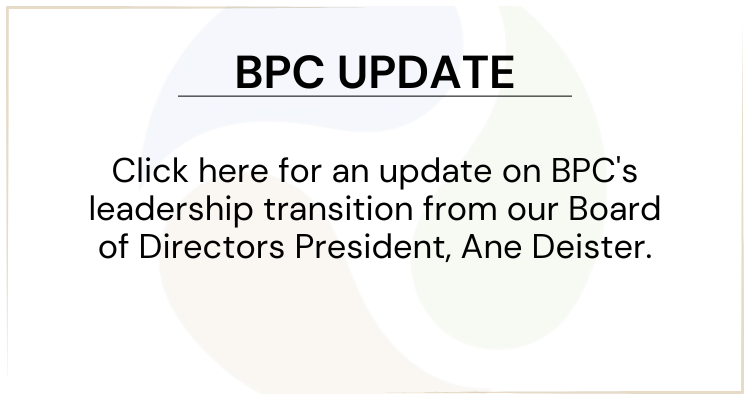GROUNDWATER RESOURCES ASSOCIATION
o f C a l i f o r n i a
Presents the 3rd GRACast Web Seminar in the Series on
Compounds of Emerging Concern in Groundwater
1,4-Dioxane and Urban Runoff as a
Potential Source of Emerging Contaminants
Dr. David Sedlak, University of California, Berkeley
Dr. Shaily Mahendra, University of California, Los Angeles
Wednesday, January 15, 2014
12:00 pm to 1:30 pm
Pacific Standard Time (San Francisco, GMT-08:00)
Early Registration (by January 9) is $50 for Members* and $75 for Non-Members*
Registration after January 9 is $75 for Members* and $100 for Non-Members*
Register For This Event – http://grac.org/event/er_regform.asp?eid=326
Add To Outlook (Open File and Save to Calendar) — http://www.grac.org/cec3.ics
Please join us for the third in our series of GRACasts exploring compounds of emerging concern in groundwater. This three-part series will focus on key groundwater contaminants including perfluorinated compounds, hexavalent chromium, 1,2,3-trichloropropane, 1,4-dioxane and others. The GRACasts will feature presentations on the technical and institutional challenges posed by the presence of these compounds in the environment. Background information including chemical history of use, sources in the environment, nationwide occurrence, analytical methods, environmental fate and transport, and technologies for removal from soil and groundwater are discussed. Case studies focusing on demonstrated cleanup successes and failures are presented. Experts from academia, regulatory agencies, consulting, industry and the legal arena are speakers in this series. The series will conclude in January 2014 and will be followed by a 1.5 day GRA symposium on the topic on February 4-5 in Concord, CA.
The third GRACast in the series will focus on 1,4-dioxane and urban runoff as a potential source of emerging contaminants.
AGENDA
1. GRACast Introduction and Overview (5 min)
Rula Deeb, Ph.D., BCEEM, Geosyntec Consultants
2. Urban Runoff as a Potential Source of Emerging Contaminants (30 min)
Dr. David Sedlak, University of California, Berkeley
The recharge of groundwater with urban runoff has the potential to augment drinking water supplies while simultaneously solving problems associated with wet weather flows. As a result, several regions are pursuing efforts to capture and recharge groundwater. Currently, water quality issues associated with urban runoff is limited to regulated stormwater contaminants, many of which have been selected on the basis of their potential impacts to aquatic ecosystems. If urban runoff contains unregulated contaminants at concentrations that pose potential risks to drinking water supplies it may be necessary to develop strategies for controlling contaminant sources or to add treatment systems to remove the contaminants prior to discharge. This talk will address organic contaminants that may pose concerns for urban runoff recharge programs and present options for minimizing risks to water supplies.
3. Questions & Answers (10 min)
4. Characterization and Treatment of 1,4-Dioxane in Groundwater (30 min)
Dr. Shaily Mahendra, University of California, Los Angeles
1,4-Dioxane, a probable human carcinogen, is emerging as a contaminant of concern in groundwater resources. Improper practices during manufacturing, use, and disposal of solvents have resulted in the contamination of groundwater with 1,4-dioxane. While biodegradation of 1,4-dioxane has been previously reported in a number of laboratory studies, reliable analytical tools to assess natural attenuation and bioremediation in the field are lacking. We recently developed a novel Compound Specific Isotope Analysis (CSIA) method for determining the enrichment of 13C in 1,4-dioxane. Pseudonocardia dioxanivorans, which can grow using dioxane as its only source of carbon and energy, was isolated and characterized in our previous work. The role of monooxygenase enzymes in catalyzing dioxane degradation was confirmed using several independent lines of evidence, and biochemical degradation pathway was described. Recently, the genome of P. dioxanivorans, assembled and annotated in collaboration with UC Berkeley and DOE Joint Genome Institute, revealed multiple monooxygenase genes. We have developed molecular biological probes targeting monooxygenase genes to serve as monitoring tools for 1,4-dioxane bioremediation in contaminated groundwater.
5. Questions & Answers (15 min)
SPEAKER BIOS
Dr. David Sedlak is a Professor in the Department of Civil and Environmental Engineering at the University of California at Berkeley, co-Director of the Berkeley Water Center and Deputy Director of the NSF Engineering Research Center for the Reinvention of Urban Water Infrastructure (http://www.UrbanWaterERC.org). Much of Dr. Sedlak’s current research addresses the fate and transport of organic contaminants in wastewater-impacted waters. Dr. Sedlak is currently an Associate Editor for Environmental Science & Technology. He is a recipient of the National Science Foundation’s CAREER Award, Fulbright Senior Scholar Award and WERF’s Paul Busch Award for Applied Water Quality Research.
Dr. Shaily Mahendra is an Assistant Professor in the UCLA Department of Civil and Environmental Engineering. She received Ph.D. from University of California, Berkeley, and post-doctoral fellowship from Rice University. She recently received National Science Foundation CAREER Award, DuPont Young Professor Award, Hellman Fellowship, Environmental Science & Technology Excellence in Review Award, Poptech Science and Public Leadership Fellowship, and Northrop Grumman Excellence in Teaching Award. Her research areas are microbial processes in natural and engineered systems, applications of molecular and isotopic tools in environmental microbiology, environmental impacts of nanomaterials, and biodegradation of emerging groundwater contaminants.
Register For This Event — http://grac.org/event/er_regform.asp?eid=326
Other Upcoming GRACasts
• January 22, 2014: Salt and Nutrient Management Plans, Part 4 – CV-Salts – An overview of the Central Valley Salinity Alternatives for Long-Term Sustainability
• January 29, 2014: Site Closure Strategies, Part 3 – Alternative Endpoints and Approaches
* This GRACast will use a conference call for audio and WebEx to display the presentation slides. Each registration is allowed access via one phone line and one log in to the WebEx module. More than one person may participate per registration by using a shared computer screen and speaker phone. GRA reserves the right to invoice those individuals and/or organizations that are logged in or connected from telephone numbers that don’t correspond to a paid registration.
GRA is dedicated to resource management that protects and improves groundwater
supply and quality through education and technical leadership.
1215 K Street, Ste 940 * Sacramento, CA 95814 * Ph: 916-446-3626 * Fx: 916-231-2141 * www.grac.org


